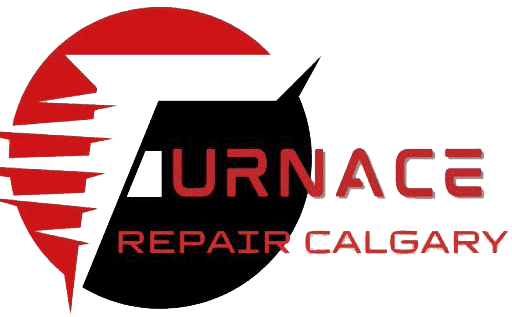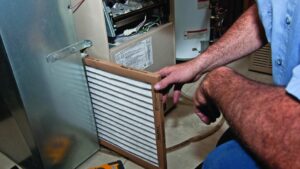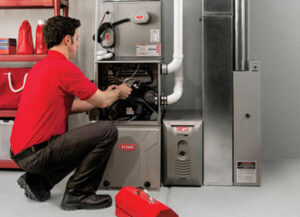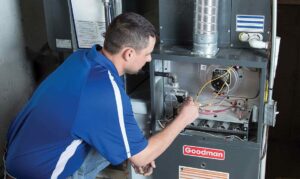What Are MERV Ratings?
If you have ever looked closely at HVAC filters when you replace them, you might have noted that every filter has its MERV ratings, which is a number with essential implications.
MERV stands for “minimum efficiency reporting value.” The MERV rating, on the other hand, measures how effectively a filter is capable of removing particles from the air passing through it. The higher the MERV rating, the higher the number of particles the filter can catch.
Still, there’s a flipside to this. Filters with a higher MERV rating usually feature denser filtration material, which means that extra force is needed to push air through the filter. It takes compelling HVAC fans to push air effectively through filters with the highest MERV ratings.
Find Your MERV Number
Using a filter in your HVAC system with a MERV rating that’s too high could have the same effect as using a dust-clogged filter. An air filter with the wrong MERV number will struggle to push air through, which accelerates the wear on your system’s fan and other components, leading to the need for more frequent repairs and service.
Check your system’s documentation for the maximum MERV limit to make more thoughtful decisions regarding the type of filter to use in your HVAC system. If you use filters above the MERV limit, you will immediately hurt the energy efficiency, which will likely lead to more expensive problems in the future.
Once you know your available range of MERV ratings, you need to consider whether there are signs that more filtration is required than you enjoy currently. For instance, are there asthma or allergy sufferers in your household? Is there a pet that sheds? Does the home seem abnormally dusty? If the answer to any of these questions is yes, you can experience some relief by upgrading to a filter whose MERV rating is higher.
By the Numbers
MERV ratings range from 1 to 20. Filters in the 1 to 4 range are most common in residential HVAC systems, but it isn’t uncommon to find homeowners using filters with MERV ratings as high as 8.
The following is a quick rundown of the filters of various MERV ratings that can filter out of the air:
MERV 1 to 4
The filters with these ratings catch large particles: carpet fibres, pollen, dust mites, dust, insects and some of their waste. You will find these filters mainly used in residential HVAC systems.
MERV 5 to 8
They are capable of caching finer dust particles, pet dander, aerosol spray particles, and mould spores. Some homes and most commercial and industrial settings use these filters.
MERV 9 to 12
The filters with these ratings are hardly ever used in residential buildings. However, they are common in certain commercial buildings and some hospital laboratories. They can capture welding fumes, automotive emissions, more significant bacteria, and lead dust.
MERV 13 to 16
You can find these heavy-duty filters in hospital surgical centers and other areas where filtration is critical, such as smoking lounges. They collect a comprehensive range of bacteria, oil droplets, smoke particles, and fine particles from sneezing.
MERV 17 to 20
You will find these top-of-the-scale filters in cleanrooms consisting of sensitive electronics and pharmaceuticals. They can catch carbon dust, viruses, along with the slightest smoke particles. You will most likely never have to use the filters with the highest MERV ratings, but anytime you turn your computer on or take a pill, you are benefiting from their filtration capabilities.






